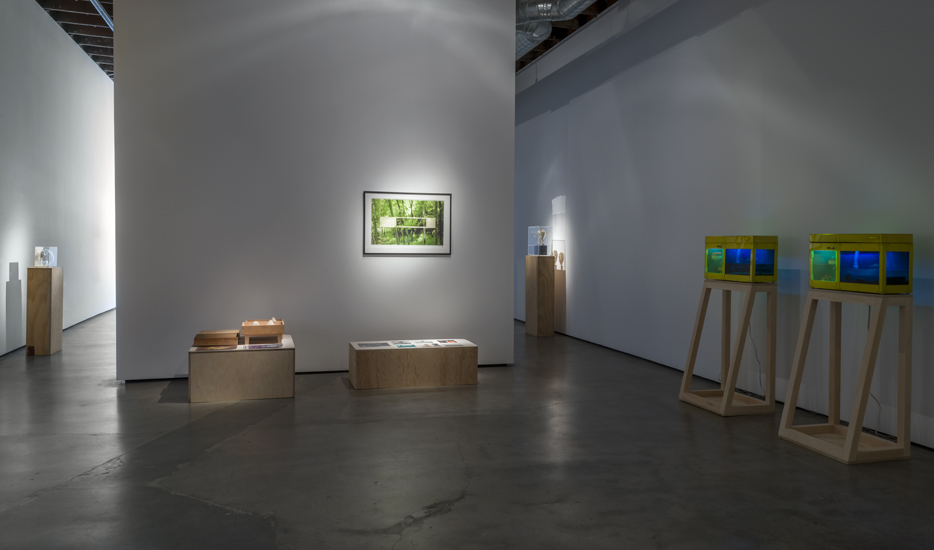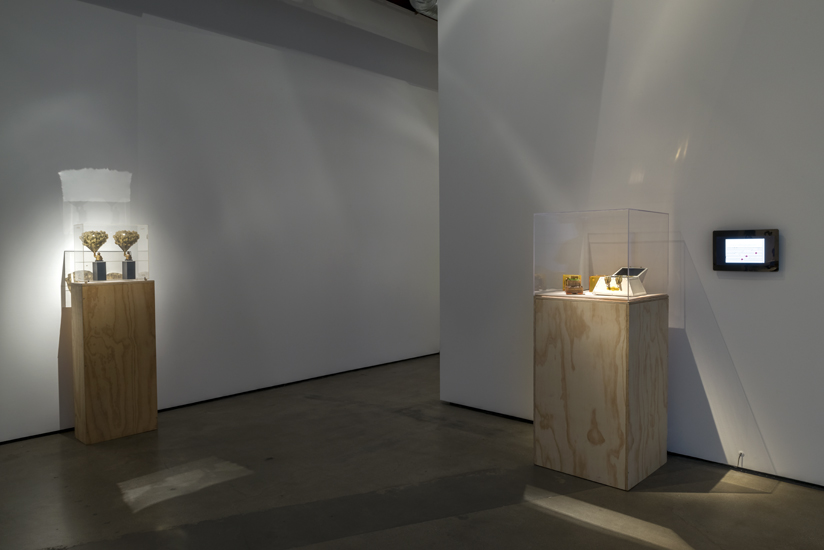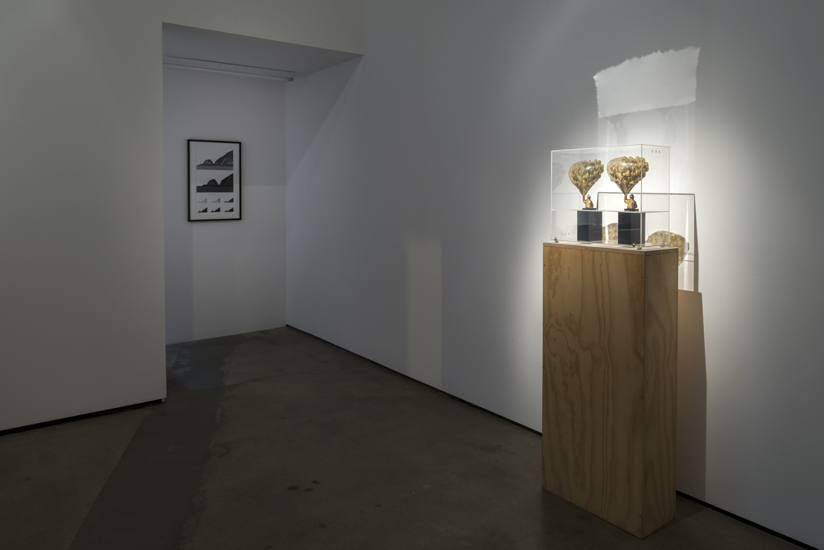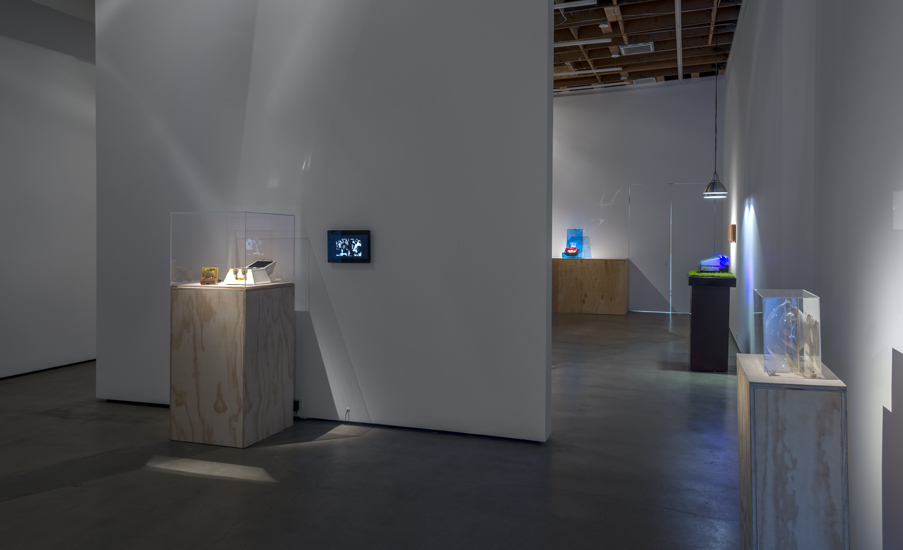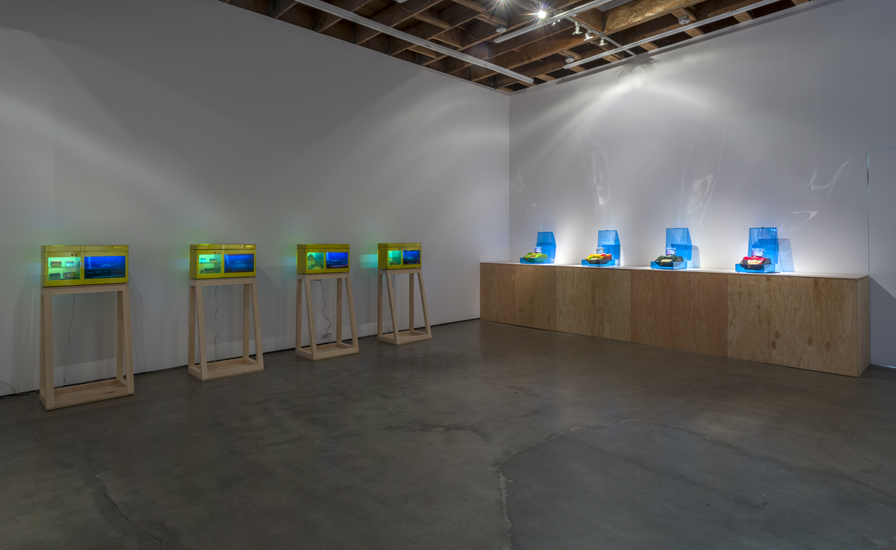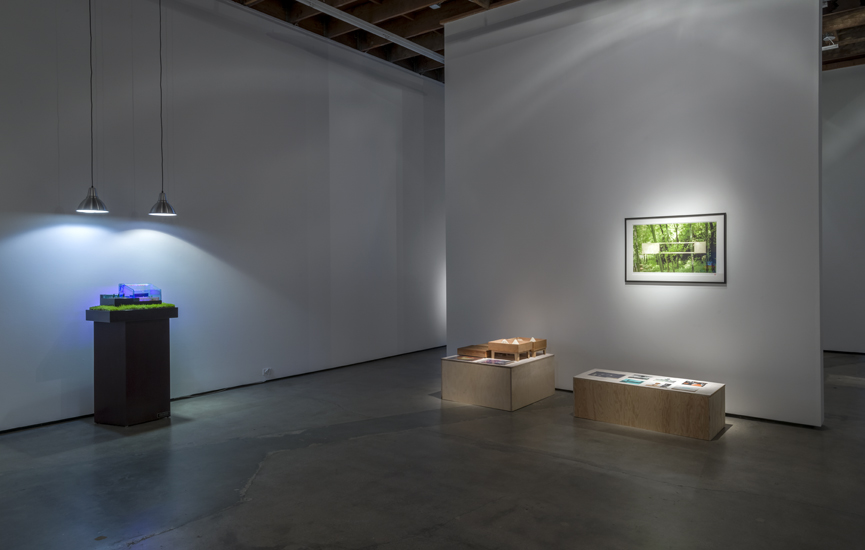Press Release
Cherry and Martin is proud to present Carl Cheng’s first solo exhibition at the gallery. For more than five decades, Carl Cheng (b,. 1942) has produced pioneering works in a range of media exploring, “technology and nature as levers, one applied to the other, in order to discover and reveal the beautiful wonders of each.” (Mark Johnstone, 2000).
Carl Cheng began his studies in art and design at the University of California, Los Angeles (UCLA) in 1958. There he worked with professors like Don Chipperfield, John Neuhart, and Henry Dreyfus, each of whom emphasized material exploration, problem-solving and cross-pollination. In 1964, Cheng received a fellowship to study at the Folkwang School of Art in Essen, Germany. In Essen, Cheng experienced a post-Bauhaus pedagogy that placed art and design in a context that included dance, theater and music. Cheng's experience in Germany also gave him his first exposure to life outside Southern California, as well as a viewpoint on racial and cultural politics in the United States that has stayed with him his entire life. When Carl Cheng returned to UCLA in 1965, he began graduate work in sculpture with Robert Heinecken, who had only just established the photography department at the school. While at UCLA, Carl Cheng worked alongside fellow students like filmmaker, draftsman and sculptor Pat O’Neill, with whom he shared a studio and with whom he has often exhibited.
In the mid-60’s Cheng began experimenting with fabricating plastic as a basis for sculpture and photography. His “Landscape Essay” (1966) presents Malibu’s Point Mugu as an unstable and serial location. “V.H.” (1966) is a molded plastic and photographic sculptural film piece that critiques the treatment of America’s veterans during the early years of the Vietnam War. Cheng worked for Charles and Rae Eames - one of their "transformers” - doing exhibition models for their exhibitions. He was involved with Experiments in Art and Technology, well known for their 1967-1971 program, "Art and Technology" at Los Angeles County Museum of Art. In 1970, Cheng was one of only a handful of Los Angeles-based artists to be included in curator Peter Bunnell’s landmark 1970 Museum of Modern Art exhibition, “Photography into Sculpture,” a show described in its original wall text as “the first comprehensive survey of photographically formed images used in a sculptural or fully dimensional manner.” In the early 70s, Cheng traveled extensively in Japan, China, India and Southeast Asia, where several of the pieces in the Cherry and Martin show were in fact made.
Carl Cheng has long-questioned the role of individuals in a mass media society driven by corporate interests: his registered entity, John Doe Co., which he established in 1967, has served as a means to engage with and at the same time critique corporate culture. Cherry and Martin’s exhibition will include a range of ephemera related to John Doe Co. John Doe Co. promotional images, literature and product reports detail and advertise the various aspects of Cheng’s artworks and ‘nature machines’ -’ like “Table Model Specimen Viewer” (1970). These corporate materials embed John Doe Co. artworks in the absurdist visual discourse of American consumerism, an aspect of life Cheng continues to question in his art of the present day.
John Doe Co’s nature machines - several of which will be on view in the Cherry and Martin exhibition - serve, as Cheng writes, to “model nature, its processes and effects for a future environment that may be completely made by humans.” “Erosion Machine” (1969) is a microwave sized mechanism, built from both handmade and off-the-shelf materials, that makes ‘human rocks’ by way of constant water erosion. Cheng’s landmark solo 1975 exhibition at Cal Tech’s Baxter Art Gallery, “Erosions & Other Environmental Changes,” included a selection of these nature machines as well as an entropic environment complete with insects, live plants and various ‘specimen’ viewing and delivery devices. “Supply and Demand” (1972), which appeared in the Cal Tech show and also appears in the exhibition at Cherry and Martin, comes complete with not only with John Doe Co. fabricated machine and base, but also with moss, venus flytraps and the flies that feed them, completing a natural feedback loop.
Carl Cheng’s work takes a material and conceptual approach that pushes the boundaries of traditional object making, post-minimalism, systems art and environmental art. Cheng plays a unique role in the history of American contemporary art practice and the history of art in California. He lives and works in Los Angeles.
Carl Cheng’s work has appeared is such exhibitions as “The Photographic Object 1970” (2014, Hauser and Wirth, New York, NY); “The Photographic Object 1970” (2013, Le Consortium, Dijon, France); “Under the Big Black Sun: California Art 1974-1981” (2013, Museum of Contemporary Art, Los Angeles, CA); “Proof: Los Angeles Art and the Photography 1960- 1980” (1992, Laguna Art Museum, Laguna Beach, CA); “Photography into Sculpture” (1970, Museum of Modern Art, New York, NY); and “Vision and Expression” (1969, George Eastman Museum, Rochester, NY). Solo exhibitions included LIST Visual Arts Center (Massachusetts Institute of Technology (Boston, MA); Santa Barbara Contemporary Arts Forum (Santa Barbara, CA); Capp Street Projects (San Francisco, CA); and ASG Foundation Gallery (Nagoya, Japan). Reviews of Cheng’s work have appeared in the New York Times, Los Angeles Times, Art News, Art in America, Art Forum and other publications. Publications include “Carl Cheng/John Doe Co.: Twenty Five Year Survey” (1991, Santa Barbara Contemporary Arts Forum, Santa Barbara, CA); “Mr X-acto: Photographs by Carl Cheng and Pat O’Neill” (1998, University of Nevada, Reno, NV); and “John Doe Co. Invites You to a New Exhibition of Products by Carl Cheng” (1970, Esther Robles Gallery, Los Angeles, CA).
(Cherry and Martin archive)
Philip Martin Gallery hours are Tuesday through Saturday from 11am-6pm and by appointment. For further information and images please contact the gallery at +310-559-0100 or info@philipmartingallery.com.
Philip Martin Gallery
2712 S. La Cienega Blvd.
Los Angeles, CA 90034
+310-559-0100
info@philipmartingallery.com
